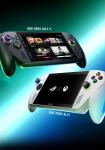Do you know the kind of cell phone you need?
Are you planning to buy a new phone?
The choices are bewildering out there in the market these days. Handsets vary from feature-rich and slickly-styled numbers to strictly functional nifty machines. And are you buying a phone or a digital player or a PDA (personal digital assistant) or all three?
Do you know your mind?
While finally it is a personal choice, you need to make sure you buy the handset that is right for you. You need to select a handset that will offer the best blend of design, features and performance. And it must not be overpriced.
Choosing a cell phone can be a much easier task if you know the features you definitely want in your phone. Let's talk about some of these features.
StyleFor some people, a cell phone isn't just a device to stay in touch, it's a style statement.
Cell phones come in primarily two styles: flip-open, clamshell-style phones and, nonflip, candy bar-style phones.
Flip phones are useful if you frequently store your mobile in a pocket when on the go, since the shape prevents accidental dialling. Flip phones can be difficult to use with one hand because the cover may be heavier than the base. Many new phones sport dual screens -- a small, external LCD on the cover, plus an internal display. But a few low-end models still lack a separate caller ID screen on the cover.
Candy bar-style phones are often sturdier and, for many users, easier to deal with. There also are an increasing number of slider and swivel phones. If you buy a nonflip phone, make sure it has a keypad lock that prevents inadvertent dialling -- a helpful feature when you put the phone in a pocket. Though most phones have this feature, don't take it for granted; a few entry-level phones might not have this feature.
Whether you get a clamshell or candy bar-style phone, check its ergonomics:
~ Is it comfortable against your ear? Can you hear callers without constant adjustment?
~ Can you use the phone with one hand?
~ How about its hands-free use: Can you comfortably hold the phone to your ear by scrunching your neck and shoulder?
~ Also, look for placement of the headset jack; a jack located on top of the phone is often more convenient than one located on the side.
PerformanceIf you plan on using your cell phone as your primary phone, then you would want a handset with strong battery life -- more than three hours of continuous talk time and five days of standby time. Some phones can last up to 14 days on standby. Keep in mind that usage affects battery life, as does the signal strength of your cellular service. A phone that constantly searches for signals, ensures that the battery runs down quickly.
Also, find out what the call quality is like and if the mobile has enough volume. A friend of yours who has used the particular handset earlier would give reliable feedback.Features
If you thought picking a design was tough, wait till you have to choose the features. The list of possible mobile features is extensive, so you'll have to carefully consider each point.
As a general rule, you shouldn't buy anything more than you need. If you want a handset just to make calls, stick with something basic. But if you're going to use your mobile for e-mail or organisational tasks, go with a high-range model. Alternatively, if you'd like to have fun with your device, consider a camera phone or a phone with in-built music player.
Here is a list of a few general must-have features.
~ Organiser applications: Even the most basic handsets offer organiser applications. Typically, you'll find a calendar, an alarm clock, and a calculator.
~ Phone book and voice dialling: Consider how many contacts you can store. Low-end phones may allow you to store a hundred or two hundred contacts while a higher end phone will link the upper limit to the phone memory. Voice dialling lets you make calls without using the keypad, which is particularly handy when you're on a headset.
~ Messaging and e-mail: Some phones send text messages only and others allow multimedia messages and you can send pictures and videos as well as text. If you'd like to receive personal or work e-mail on your handset, make sure it supports this feature. If you would like to stay connected to your official or personal mails on a cell phone, you might also consider a phone with an integrated / QUERTY keyboard for faster typing.
~ Camera and video recorder: Use them for taking pictures, shooting brief video clips, and sharing them with others. Entry-level phones have low-grade VGA models, but some camera phones now have resolutions of a few megapixels, which are comparative to that of high-end digital cameras.
~ Speakerphone: A speakerphone is useful for multitasking, such as working on a computer while you're holding a conversation.
~ Push to talk: This is a walkie-talkie-like service that lets you immediately connect with individuals or call groups, which is especially useful for business users who need instant contact with their colleagues.
~ Bluetooth: This feature lets you wirelessly connect with external devices, such as a headset for making calls. Many phones also allow you to wirelessly exchange or sync data with other Bluetooth devices or Bluetooth-enabled computers. The Bluetooth enabled handsfree units are also quite common these days; you can attach a piece of plastic on to your ear and roam around, talking without any wire connecting your handsfree unit to your handset; James Bond style for the common man!
~ Multimedia options and memory: Some features to look for include a digital music player, support for MP3 files, and an FM radio. Also, many phones now support streaming video and videoconferencing through 3G services -- a technology enabling transfer of both voice data (like telephone calls) and non-voice data (like images) simultaneously, and other handsets can download. For the best experience, make sure your phone has plenty of storage space (an external memory card slot is best), and consider whether you want dedicated music controls on the exterior of the phone.
~ Screen resolution: Also consider the resolution of the display and whether you can read it clearly. The colour phones these days have a screen resolution of 96x68 pixels to 240x320 pixels.(a higher screen resolution means more number of light dots falling on to the screen in a per unit area.) The bigger the screen resolution, the better is the display on the screen.
Finally, remember that you'll want to enjoy using your phone and carrying it around. So, go for an interface that's attractive and easy to use, and pick a colour and shape you won't mind holding in your hand. And since some handsets are more rugged than others, find something that fits your activity level.





